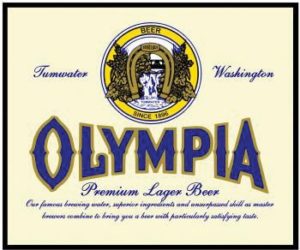Black Steam
Black Steam
(5 gallons/19 L, partial mash)
OG = 1.059 FG = 1.014
IBU = 50 SRM = 18 ABV = 6.1%
Ingredients
2 lbs. (0.91 kg) pale malt
0.5 lb. (0.23 kg) dark crystal malt (90° L)
0.25 lb. (113 g) Carafa® Special III malt
0.25 lb. (113 g) dark Munich malt (20° L)
5 lbs. (2.27 kg) light dried malt extract
8 AAU Northern Brewer hops (50 min.) (1 oz./28 g at 8% alpha acid)
8 AAU Northern Brewer hops (20 min.) (1 oz./28 g at 8% alpha acid)
8 AAU Northern Brewer hops (5 min.) (1 oz./28 g at 8% alpha acid)
Wyeast 2112 (California lager) or White Labs WLP810 (San Francisco Lager) yeast
7/8 cup corn sugar (if priming)
Step by Step
Heat 1 gal. (3.8 L) of water to 165 °F (74 °C). Crack grains and mash in. Hold mash at 154 °F (68 °F) for 60 min. Wash grains with 2 gal. (7.6 L) of 168 °F (76 °C). Add dried malt extract to kettle and bring to a boil. Total boil is 50 min. Add first round of hops and boil 30 min. Add second round of hops, boil 15 min. more. Add the rest of the hops, boil 5 min. more, and remove from heat. Chill the wort, then add to your primary fermenter along with enough water to make up 5.25 gal. (20 L). Cool to 70 °F (21 °C), aerate well, and pitch yeast culture. Ferment between 65 °F and 70 °F (18 to 21 °C) for five to eight days, rack to secondary, and chill to 55 °F to 60 °F (13 to 16 °C). Lager for two weeks, then prime and bottle or keg and force carbonate.
All-grain version:
Increase pale malt to 11.5 lbs. (5.2 kg), mash water to 4 gal. (15.2 L) and sparge water to 5 gal (19 L). Follow the same mash schedule and temperatures as above, but plan your boil and hop schedule to reduce kettle contents to 5.25 gal (20 L).
Extract with grains version:
Steep crystal and black malts in 3 gal. (11 L) of water, raising heat in kettle to 170 °F (77 °C). Remove grains and stir in 5 lbs. (2.27 kg) light dry malt and 1.25 lbs. (0.57 kg) Munich dried malt extract. Boil and hop as above.
Yeast:
Although the California lager strain is a very warm-tolerant lager strain, it is still best not to ferment too warm. Some ale-like fruitiness is desirable, but it’s easy to overdo. Begin fermentation warm and gradually cool the fermenter down. A short lagering stage will finish off the beer without drying it out excessively, and will help clarify it.
A note on packaging: I may be a heretic, but I prefer bottled homebrew to kegged. Some brews, including this one, just seem more balanced, more alive from the bottle than from a keg. The live yeast continues to contribute flavor compounds in the bottle and keeps the beer fresher tasting for a longer time. Also, the natural carbonation from bottle conditioning adds a smoothness that can’t be matched by force carbonation (unless you want to get into a nitro mix setup!). This style of beer needs to be relatively highly carbonated, so if you are going to keg it, adjust your pressure accordingly.
Written by Scott Russell
A steam beer seems like the perfect style to schwarz-up. Here is a recipe to get you there.



